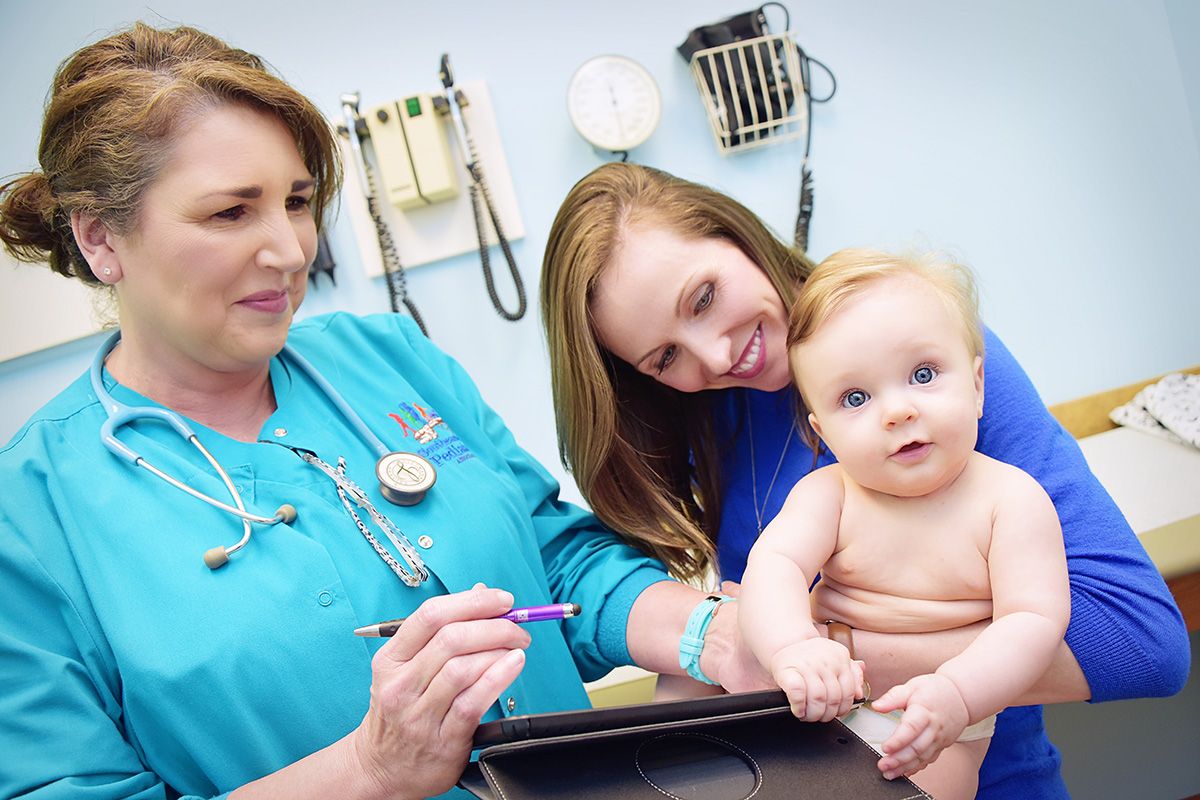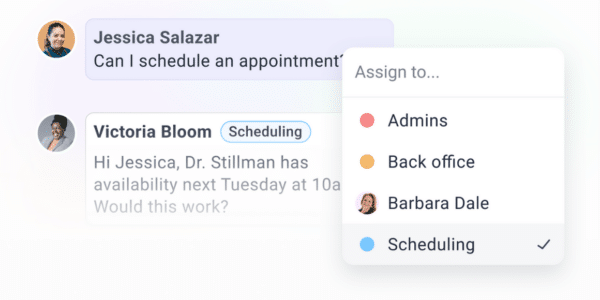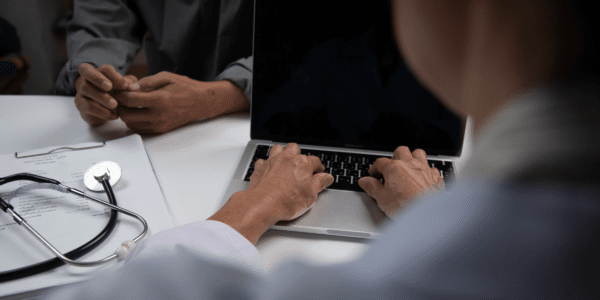CASE STUDY – THE “PARKING LOT WAITING ROOM” IMPROVES EFFICIENCY AND PATIENT EXPERIENCE
CHALLENGES
- Patients spending 15-20 minutes filling out forms in the waiting room, backing up appointments and increasing wait times
- COVID-19 concerns requiring social distancing and avoiding contact with physical forms
SOLUTIONS
- OhMD Texting to create a “parking lot waiting room”, allowing patients to text when they arrive
- OhMD Forms to streamline patient intake and avoid physical contact
RESULTS
- Check-in time reduced from 15 minutes to just 5, easier for the patient and reducing backflow
- With patient information at their fingertips, nurses feel more present and prepared for patients
- COVID-19 safety measures practiced, making the patient and staff at ease
This Alabama pediatric practice made patient intake simple and safe with patient texting and electronic forms during the COVID-19 pandemic
Southeastern Pediatric Associates sees approximately 300 patients a day. That leaves little room for error when it comes to patient intake, getting patients into their exam rooms on time, and addressing their needs.
Before OhMD, each patient could take as long as 15 to 20 minutes to fill out the required forms in the waiting room before handing them off to a nurse in the exam room. Not to mention if a parent had multiple children coming in for a check-up, that time could double or triple.
This patient intake process posed two big problems for Southeastern Pediatric Associates. First, it caused major setbacks in the practice appointment schedule and increased waiting time for patients, hurting patient satisfaction. Second, with the start of COVID-19, it was no longer safe for patients to be in the waiting room or for patients and staff to come into contact with the same paper forms.
COVID-19 led Southeastern Pediatric Associates to a completely new workflow for form collection and patient check-in. They call it the “parking lot waiting room”. Now, patients wait for appointments in their cars instead of in the office. They text the practice to signal that they’ve arrived and the practice texts them back when they should come in. Not only do patients practice social distancing, they actually prefer their cars to the traditional waiting room.
OhMD is making check-in much smoother. We are saving time by having patients text to check-in and complete their forms prior to their appointment.”
– Kristee Dowling, Clinical Research Coordinator
“Patients are completely satisfied with texting and love waiting in their vehicles,” says Kristee Dowling. “During these times of uncertainty, I think waiting in the car until the exam room is available is awesome! It’s a win-win for our office and our patients!”
Now with OhMD, the practice can text form packets to patients to fill out on their smartphones at home before their appointment. New patients can electronically submit onboarding forms like their contact information, medical history, PHQ-9 and MCHAT ahead of time. This saves both patients and staff time by cutting dated patient intake processes like paper forms and the traditional waiting room out of the practice workflow.
Since Southeastern Pediatric Associates switched to OhMD, the time it takes to check-in has dropped from 15 minutes per patient to just 5 minutes from the time a patient parks to the time their appointment starts. The practice is sending close to 100 messages a day and has steadily increased the number of forms sent to be filled out pre-appointment.
Using OhMD forms saves Southeastern Pediatric Associates time and allows for better patient care. When forms are completed ahead of time, nurses have the opportunity to review them in advance and come to the exam room with updated knowledge of the patient’s health. This eliminates the hassle of patients needing to repeat themselves. With easy access to patient information, nurses are more prepared and can be more present with their patients, improving the patient experience.
Looking to the future, Dowling says Southeastern Pediatrics plans to expand the ways they use OhMD to continue to improve the patient experience. To start, “We may add a customer survey option,” she says, suggesting the strides the practice has made to improve patient care will continue now that they have the tools to do so.


